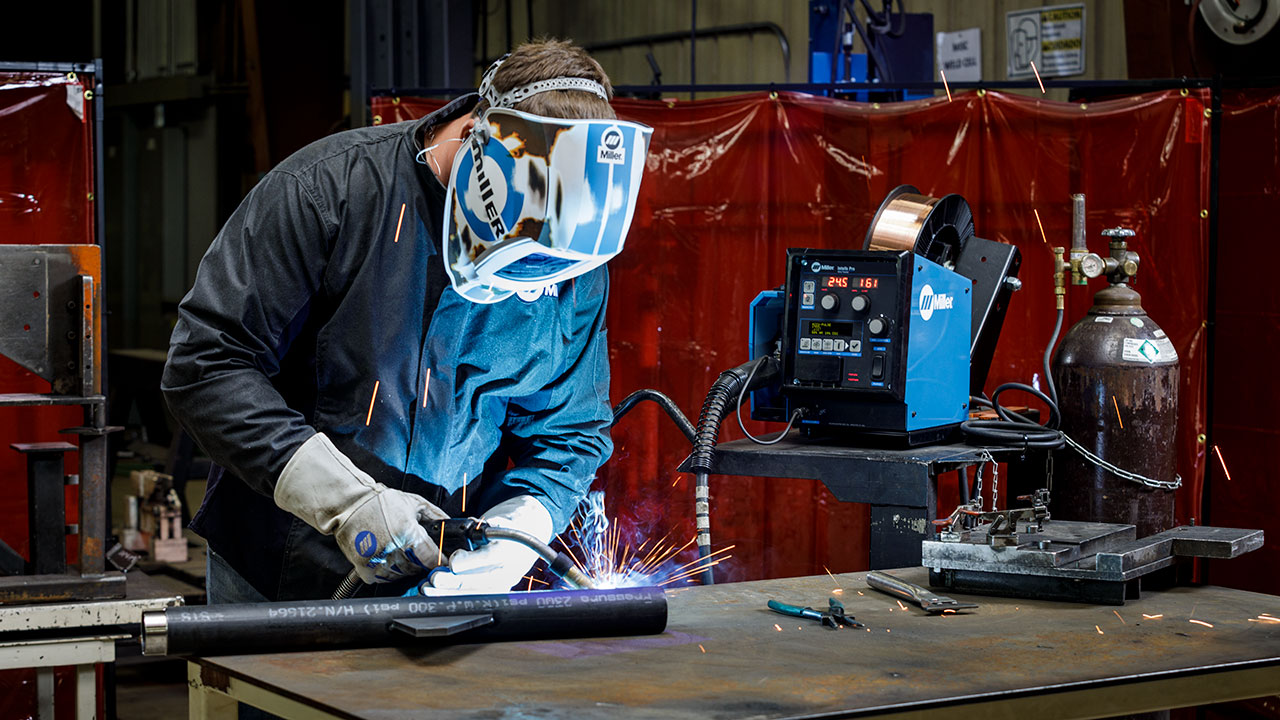How to Establish an Effective Welding WPS: Tips and Best Practices
How to Establish an Effective Welding WPS: Tips and Best Practices
Blog Article
The Ultimate Guide to Welding WPS Procedures: An Extensive Summary for Welders
In the elaborate world of welding, Welding Procedure Specs (WPS) offer as the backbone of ensuring top quality, consistency, and security in welding procedures (welding WPS). As we dive right into the different components of a WPS and discover the details of qualification and certification, we will uncover the crucial role these procedures play in the realm of welding.
Importance of WPS Procedures
Understanding the value of Welding Procedure Specifications (WPS) treatments is vital for ensuring the quality and integrity of bonded frameworks. WPS procedures function as a roadmap for welders, outlining the essential actions, specifications, and materials required to achieve a sound weld. By adhering to WPS guidelines, welders can guarantee consistency in their job, resulting in structurally sound and trusted welds.
Among the primary reasons that WPS procedures are important is their role in keeping weld quality and integrity. Adhering to the defined welding specifications and strategies outlined in the WPS helps protect against issues such as porosity, splitting, or incomplete blend, which can endanger the stamina and resilience of the weld. In addition, WPS treatments are critical for making sure conformity with market standards and codes. By complying with well established WPS guidelines, welders can demonstrate that their work fulfills the needed requirements for safety and security and quality, offering guarantee to clients, examiners, and governing bodies. Basically, the relevance of WPS treatments can not be overstated, as they are basic to achieving regular, top quality welds that fulfill market standards and specifications.

Elements of a WPS
A Welding Treatment Specification (WPS) generally consists of crucial parts that information the particular requirements for performing a weld, guaranteeing consistency and quality in the welding process. The vital parts of a WPS include important variables such as base steels, filler steels, interpass and preheat temperatures, welding procedures, shielding gases, welding settings, and post-weld heat therapy requirements.
Base metals describe the materials being signed up with, while filler metals are used to fill up the void between the base steels throughout welding. Preheat and interpass temperature levels are crucial for regulating the warmth input and protecting against problems like cracking or distortion. The welding procedure outlines the details technique to be used, whether it's gas steel arc welding (GMAW), shielded metal arc welding (SMAW), or another method. Protecting gases shield the weld pool from climatic contamination. Welding positions define the alignments in which welding can be performed. Post-weld heat therapy might be essential to relieve anxieties and improve the weld's properties. A comprehensive understanding of these elements is essential for developing a extensive and efficient WPS.

Qualification and Accreditation
Having established the important elements of a Welding Treatment Spec (WPS), the emphasis now shifts towards the vital facets of qualification and accreditation in welding techniques.

Accreditation, on the other hand, is the official acknowledgment of a welder's qualifications by an appropriate accreditation body or company. Welding accreditations are generally based upon the particular welding procedures, materials, and placements a welder is certified to work with. Holding a legitimate welding qualification shows that a welder fulfills market standards and is skilled to do welding jobs to the needed requirements.
Developing a WPS
To establish a Welding Procedure Spec (WPS) that satisfies industry standards, cautious consideration of welding processes, products, and functional criteria is vital (welding WPS). The very first step in developing a WPS is to recognize the welding process to be utilized, such as you can try this out gas steel arc welding (GMAW) or shielded steel arc welding (SMAW) As soon as the welding process is identified, the next vital element is selecting the ideal materials, taking into consideration aspects like base steel type, density, and joint style. Functional criteria such as welding existing, voltage, travel speed, and shielding gas make-up need to likewise be meticulously specified in the WPS.

Carrying Out and Monitoring WPS
Upon wrapping up the extensive Welding Procedure Requirements (WPS) that thoroughly details welding processes, materials, functional criteria, and top quality guarantee actions, the emphasis shifts to efficiently implementing and monitoring the well established procedures. Application involves guaranteeing that all welders included in the project are acquainted with the WPS link and follow it thoroughly throughout the welding process. Efficient execution and tracking of the WPS are essential for ensuring the integrity, stamina, and safety of the welded joints, inevitably contributing to the total success of the welding task.
Verdict
In conclusion, understanding and complying with Welding Treatment Specifications (WPS) is crucial for welders to guarantee quality, consistency, and safety in their job. By recognizing the elements of a WPS, obtaining proper certifications and accreditations, producing thorough treatments, and applying and monitoring them effectively, welders can improve their abilities and effectiveness in welding methods. Following WPS procedures is necessary for creating high-quality welds and conference market criteria.
In the intricate globe of welding, Welding Treatment Requirements (WPS) offer as the backbone of guaranteeing top quality, uniformity, and safety and security in welding operations. The welding procedure lays out the sites details method to be made use of, whether it's gas steel arc welding (GMAW), shielded steel arc welding (SMAW), or an additional approach.To develop a Welding Procedure Spec (WPS) that fulfills industry requirements, careful consideration of welding processes, products, and functional criteria is important. The initial action in developing a WPS is to determine the welding procedure to be utilized, such as gas steel arc welding (GMAW) or shielded steel arc welding (SMAW)Upon settling the extensive Welding Procedure Specification (WPS) that diligently information welding procedures, products, functional criteria, and top quality guarantee procedures, the emphasis moves to efficiently implementing and keeping track of the well established treatments.
Report this page